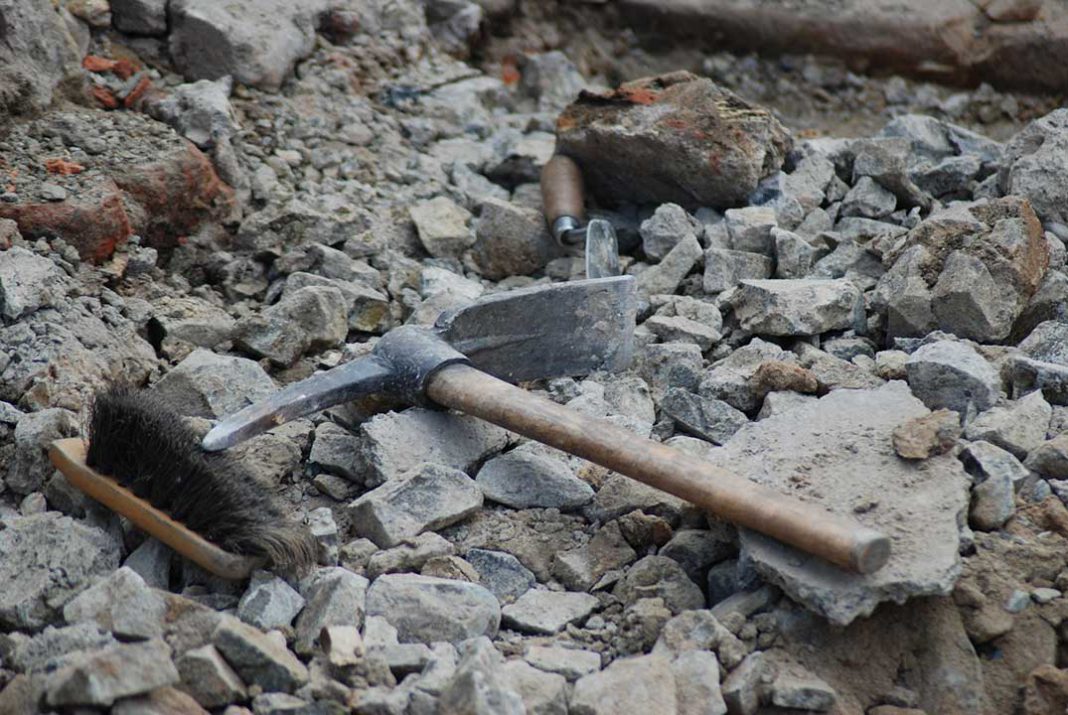Highlights area’s 10,000 years of human activity
SHEGUIANDAH—The Centennial Museum of Sheguiandah will soon boast a new state-of-the-art exhibit dedicated to the Sheguiandah archaeological site that proved existence of First Nations people on Manitoulin 10,000 years ago.
The Northeast Town council received four bids for the Sheguiandah Archaeological Site creative concept and graphic design services for the museum from: Cosmic ($35,910); Bali Creative Source ($37,650); SA•WAT•SKI Concept Reality ($36,950); and Strexer Harrop ($33,700).
The tender was awarded to SA•WAT•SKI Concept Reality of Collingwood. The price also includes a website, museum design and installation. Northeast Town CAO Dave Williamson explained that the tender was awarded based on design, concept and experience.
“All museum and (museum) trail features have been uniquely designed to tell a story and represent the vision of the Sheguiandah Archaeological Site,” the SA•WAT•SKI Concept Reality proposal states. “We will carefully construct all element of the exhibit and site with great attention with the goal of enticing visitors’ experiences and ultimately enhancing their experiences.”
The display will include up to 10 interpretive panels (photos and text), site signage, a marketing plan and materials, website design, an interactive online game, a promotional video for the museum exhibit which will include a mini dig for kids with three stump stools on casters, wall mounted display cases with artifact mounts, informative wall panels and custom designed and movable showcases.
Dr. Pat Julig, a professor at Laurentian University, re-opened the Sheguiandah site in 1991, 40 years after the ancient site was first dug by National Museum of Canada archaeologist Thomas E. Lee. Dr. Julig, through graphic representations, figures prominently in the concept design, which is preliminary at this stage.
Dr. Julig was instrumental in firmly establishing the traces of prehistoric Paleo-Indians at the Sheguiandah site dated from approximately 10,000 years ago. Dr. Julig now resides in Sheguiandah and is a regular fixture at the museum, sometimes leading tours to the dig site on behalf of the museum. The late Dr. Lee held that the Sheguiandah site dated to as much as 30,000 years ago, a claim that left him as a controversial figure among his 1950s colleagues.
Much discussion from council ensued as to where the display signs would be placed. It was decided that the outdoor signage would fall within the museum grounds. Councillor Dawn Orr expressed concern that it should be accessible all year, which makes it hard when the grounds become gated during the off-season.
“Accessibility is key,” she said.
Mr. Williamson said it was important to note that access to the historically significant dig site would only be through guided tours.
Mayor Al MacNevin added that there has been no commitment from the Sheguiandah First Nation yet on the project, but should they decide to come aboard, they could host tours if they so choose.
Councillor Orr also cited the need for better washroom facilities. “If we’re going to do this, we need to do it right,” she said.
Councillor Erskine pointed to the sample logos provided by SA•WAT•SKI Concept Reality, two of which included the oft-used short form of ‘Sheg’ and said that due to the historical significance of the site and out of respect to our neighbours, the full name of Sheguiandah should be used. Councillor Erskine’s council colleagues agreed.
“Ontario cultural history goes back over 10,000 years and on Manitoulin we are privileged to have a record going back that far,” said Dr. Julig when contacted for comment. “Our shared heritage matters greatly and stories are powerful. We need to share these stories with others who visit our community and museum, as there is a strong demand or desire to learn about the past.”
“I have had the rare privilege of excavating at two National Historic sites in Northern Ontario, Cummins site in Thunder Bay and Sheguiandah site, and other neat places around the world,” Dr. Julig added. “Sheguiandah is a special place.”
“Many tourists and students are interested in what we have discovered and this needs to be better communicated in the museum displays, which are rather old, and tell little of the findings of the more recent excavations in the 1990s,” the professor continued.
“Likewise, the First Nations perspectives are not well communicated, as elders view such ancient quarry sites as sacred and places to meditate, similar to Dreamer’s Rock,” Dr. Julig added.
“Updated educational displays are needed to better tell the stories and uncover the mysteries of the past 10,000 years in our community,” he said. “Since this is the 150th anniversary for Canada and the 50th anniversary for the Centennial Museum this is an opportune time, and we thank the Northeast Town council and the input from the Sheguiandah First Nation and the elders for their collaboration.”
The project comes in at approximately $120,000 and is expected to be completed by early summer.



